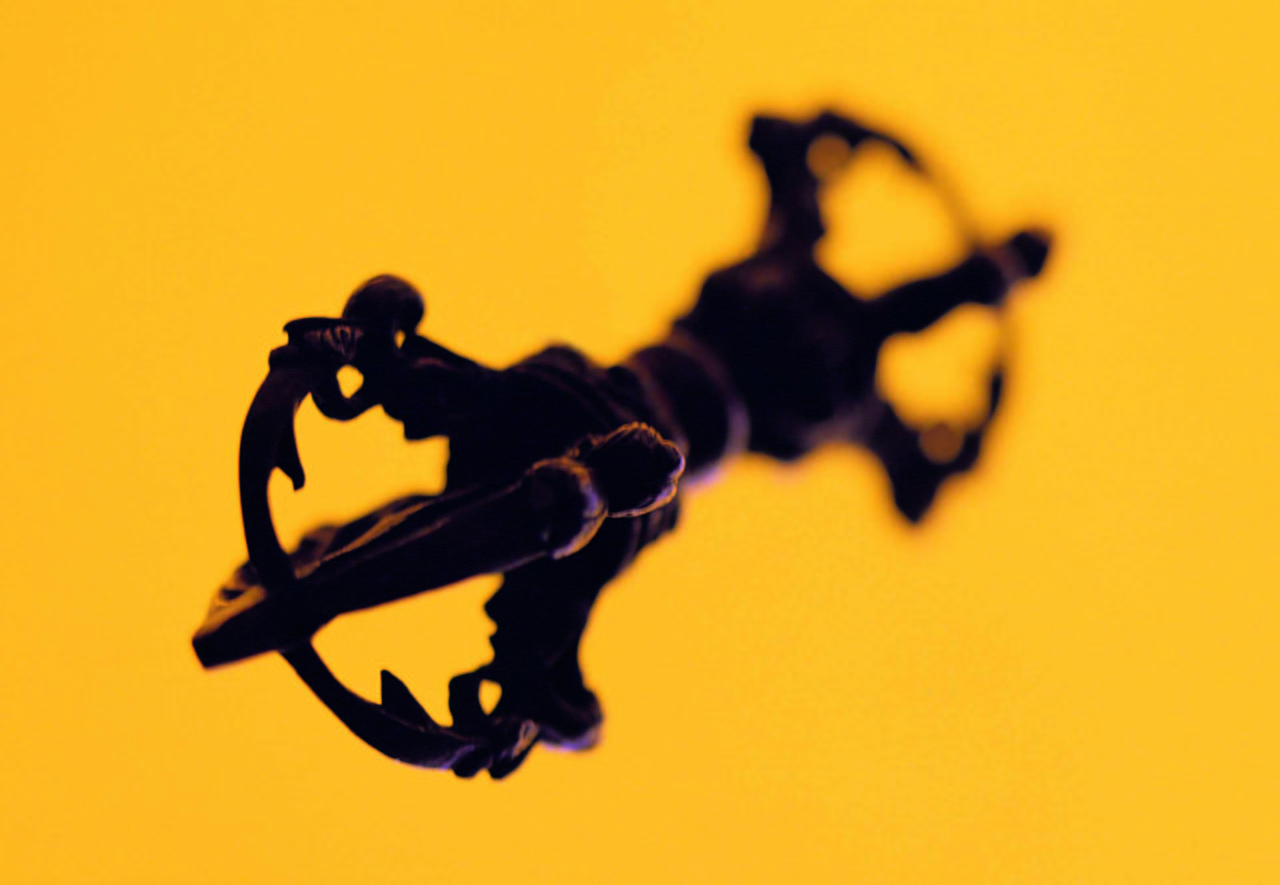These verses are devoted to Prajnaparamita: the female Wisdom Buddha. They are written for recitation as a puja, a ritual intended to inspire faith in the possibility of gaining the deepest Wisdom and devotion to the path that leads to it.
The Buddha Prajnaparamita is the distillation of the Perfection (paramita) of Wisdom (prajna) texts, which are devoted to the wisdom of shunyata or voidness. These texts include the Heart Sutra and the Diamond Sutra, as well as many others. She is represented as a beautiful, mature woman, and her golden colour is made up of millions of tiny Buddhas. Each hand holds the stem of a lotus flower on which rests a copy of The Perfection of Wisdom in Eight Thousand Lines.
Puja to the Buddha Prajnaparamita
Om namo bhagavatyai aryaprajñaparamitayai
Om namo bhagavatyai aryaprajñaparamitayai
Om namo bhagavatyai aryaprajñaparamitayai
Bright queen of the sky,
Radiant in glory,
Brilliant you shine
Like the sun at its height.
And far spread your beams
Through infinite space.
Piercing the gloom
Like dawn’s gentle rays.
O bringer of vision
To those who are lost,
And stumble in darkness
In the thick night;
O beacon of wisdom,
Dispeller of darkness,
Destroyer of craving –
Illumine my life.
mantra: om ah dhih hum svah
2. Salutation
Gold is your body
Like ripening corn;
Blue are your eyes,
Gazing far inward;
And dark is your hair
As it falls by your side.
Jewels adorn you
And silks flow upon you.
You are seated serene,
Poised in Samadhi,
Perfectly still
In the infinite sky.
3. Confession
Om svabhava suddha sarvadharmah svabhava suddho ham
Om svabhava suddha sarvadharmah svabhava suddho ham
Om svabhava suddha sarvadharmah svabhava suddho ham
Mother of Buddhas
And all of the wisdoms,
Knower of essence,
And bearer of jñana,
Sunyata’s emblem:
Please hear me confess.
When I have been unskillful with my body
I have forgotten you;
When I have been unskillful with my speech
I have forgotten you;
When I have been unskillful with my mind
I have forgotten you;
In many ways, at many times, in many places,
I have forgotten you.
I confess all my failings,
My weakness, my blindness
O hear my confessions
And grant me your blessing!
4. Entreaty
Om namo bhagavatyai arya prajñaparamitayai
Om namo bhagavatyai arya prajñaparamitayai
Om namo bhagavatyai arya prajñaparamitayai
O silent one, wise one,
O knower of secrets,
Whisper to me
The sound before silence.
Enter my heart
With the wisdom of dhih.
May dhih fill my heart.
May dhih fill my speech.
May dhih fill my mind.
Oh, wide is my heart,
Please grant me your teaching!
Recitation of the Heart Sutra
5. Completion
O, great Lady Prajñaparamita,
May I rest in your beauty.
Suffuse me, O bright one,
With you golden light.
May dhih pervade me,
Transforming defilements.
May it shine through me
With the warmth of compassion.
Now, and at all times,
May your secret light
Illumine my mind.
May it guide me to the truth.
mantra: gate gate paragate parasamgate bodhi svaha
6. Concluding Mantras
om mani padme hum
om a ra pa ca na dhih
om vajrapani hum
om tare tutare ture swaha
om amideva hrih
om muni muni maha muni shakyamuni svaha
gate gate paragate parasamgate bodhi svaha
om santi santi santi
The sections of this puja are based on features of traditional pujas. The mantras are taken from texts associated with Prajnaparamita. For more information see Jayarava’s excellent Visible Mantra site.



Why do you link to Lok To translation instead of the TBC? Is that because you prefer this one? Is that the one you intend to be chanted in this puja, or does it matter?
There’s no profound reason: both translations are problematic. The Triratna one is Philip Kapleau’s translation of a Japanese text used in Rinzai Zen temples, which derives ultimately from the Hsuan Tsang translation from sanskrit into Chinese. So this one is closer to the source, but not much. I’ll seek out a replacement I think.
Hi Viśvapāṇi,
Re the Heart Sutra: having studied the various Sanskrit and Chinese versions, I now see that the English version in the Puja Book is pretty good in fact. It’s from the original Chinese and gets the idea across. You may be aware that the oldest version of the text extant is the Chinese attributed to Xuanzang (Taishō 8.251). The Sanskrit is now thought to be a translation of that Chinese text or one very similar. And it is a poor translation, which is what a lot of my current work is about. It’s also been poorly edited by Conze who made a number of errors in the Sanskrit. So most English translations from the Sanskrit are rather poor reflections of the text as they are from Conze’s edition.
Ironically after all the criticism of it, the Kapleau version is one of the least “problematic” of all the English translations!
My revision of the Sanskrit and translation are on my blog: http://jayarava.blogspot.co.uk/2013/09/a-new-sanskrit-heart-sutra.html
Re the Diamond Sutra – the site you link to is a rather horrendous collages of a variety of translations. A far better text can be found on the Biblioteca Polyglotta. I’m working on a new translation of the new edition of the Sanskrit published in 2006.